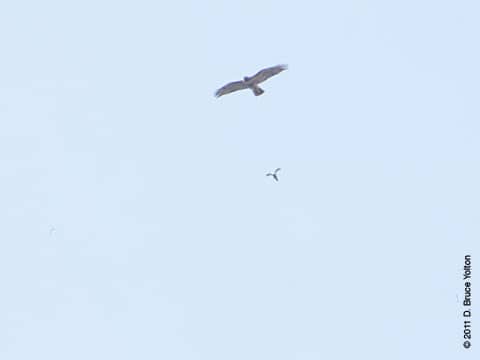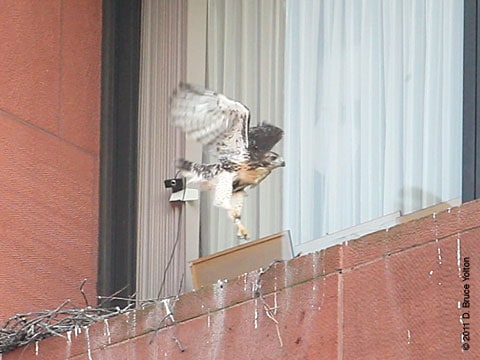I was watching the eyass on the Washington Square nest and a women joined me. We started discussing the fledge date and I said the fledge window had started. She retorted, “She won’t fledge yet, her tail is too short.”
I wanted to scream! Yes, an eyass usually waits to fledge until it is mature enough, which is best measured by the length of its tail. However, eyasses fledge too early for their own good all the time. This time of year, hawks fledging too early keep many a rehabber busy.
So, could all the hawk watching newbies, please remember that when it comes to hawk behavior each bird is different. Some fledge early, some late. Some like to beg for food, others are quiet. Some become independent quickly, others take time to become independent.
This variation between nests, based on the individual parents behavior, site logistics, and the individual fledglings is what make urban hawk watching fascinating. I’m looking forward to years of following the Washington Square hawks and learning how the parents and their children adapt to a heavily populated urban park.












